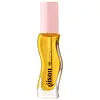What's inside
What's inside
 Key Ingredients
Key Ingredients

 Benefits
Benefits

 Concerns
Concerns

 Ingredients Side-by-side
Ingredients Side-by-side

Polyglyceryl-2 Isostearate/Dimer Dilinoleate Copolymer
EmollientDilinoleic Acid/Propanediol Copolymer
EmollientVitis Vinifera Seed Oil
EmollientCarthamus Tinctorius Seed Oil
MaskingHelianthus Annuus Seed Oil
EmollientMauritia Flexuosa Fruit Oil
Skin ConditioningVaccinium Myrtillus Seed Oil
Skin ConditioningMel
EmollientOenothera Biennis Oil
EmollientRosa Canina Fruit Oil
EmollientTocopherol
AntioxidantEthylhexyl Palmitate
EmollientTrihydroxystearin
Skin ConditioningSodium Hyaluronate
HumectantGlucomannan
Skin ConditioningAroma
Calendula Officinalis Flower Extract
MaskingDaucus Carota Sativa Root Extract
Skin ConditioningCitrus Aurantium Bergamia Fruit Extract
Skin ConditioningPropolis Cera
AntiseborrhoeicCitronellol
PerfumingGeraniol
PerfumingLinalool
PerfumingLimonene
PerfumingCitral
PerfumingPolyglyceryl-2 Isostearate/Dimer Dilinoleate Copolymer, Dilinoleic Acid/Propanediol Copolymer, Vitis Vinifera Seed Oil, Carthamus Tinctorius Seed Oil, Helianthus Annuus Seed Oil, Mauritia Flexuosa Fruit Oil, Vaccinium Myrtillus Seed Oil, Mel, Oenothera Biennis Oil, Rosa Canina Fruit Oil, Tocopherol, Ethylhexyl Palmitate, Trihydroxystearin, Sodium Hyaluronate, Glucomannan, Aroma, Calendula Officinalis Flower Extract, Daucus Carota Sativa Root Extract, Citrus Aurantium Bergamia Fruit Extract, Propolis Cera, Citronellol, Geraniol, Linalool, Limonene, Citral
Polyglyceryl-2 Isostearate/Dimer Dilinoleate Copolymer
EmollientHelianthus Annuus Seed Oil
EmollientCocos Nucifera Oil
MaskingCamellia Japonica Seed Oil
EmollientCaprylic/Capric Triglyceride
MaskingDextrin Myristate
EmulsifyingAloe Barbadensis Leaf Extract
EmollientCannabis Sativa Seed Oil
EmollientCarthamus Tinctorius Seed Oil
MaskingAgave Tequilana Leaf Extract
AstringentMentha Piperita Oil
MaskingTocopheryl Acetate
AntioxidantPentaerythrityl Tetraisostearate
EmollientMica
Cosmetic ColorantParfum
MaskingCitral
PerfumingLimonene
PerfumingLinalool
PerfumingCI 19140
Cosmetic ColorantCI 42090
Cosmetic ColorantPolyglyceryl-2 Isostearate/Dimer Dilinoleate Copolymer, Helianthus Annuus Seed Oil, Cocos Nucifera Oil, Camellia Japonica Seed Oil, Caprylic/Capric Triglyceride, Dextrin Myristate, Aloe Barbadensis Leaf Extract, Cannabis Sativa Seed Oil, Carthamus Tinctorius Seed Oil, Agave Tequilana Leaf Extract, Mentha Piperita Oil, Tocopheryl Acetate, Pentaerythrityl Tetraisostearate, Mica, Parfum, Citral, Limonene, Linalool, CI 19140, CI 42090
 Reviews
Reviews

Alternatives
Ingredients Explained
These ingredients are found in both products.
Ingredients higher up in an ingredient list are typically present in a larger amount.
Carthamus tinctorius seed oil comes from safflower, one of humanity's oldest crops.
Safflower seed oil contains a high percentage of linoleic acid and oleic acid. It also contains Vitamin E. These three components are effective moisturizers.
Vitamin E helps nourish your skin's lipid barrier. It is also a potent antioxidant. Antioxidants help fight free-radical molecules, or unstable molecules that may damage your skin cells.
Due to its high fatty acid content, this ingredient may not be malassezia folliculitis safe.
Thoughout history, safflower has been used for dying fabrics and in food as a saffron substitute.
Learn more about Carthamus Tinctorius Seed OilCitral is a fragrance and used to add a lemon-like scent to products. It is both naturally found in plants and created synthetically. In plants, it is commonly occurring in lemon myrtle, lemongrass, lemon tea-tree, lemon verbena, and other citruses.
The EU mandates Citral be listed separately as a fragrance. It is a known allergen and may cause contact dermatitis. Citral can also used as a masking ingredient.
The term 'fragrance' is not regulated in many countries. In many cases, it is up to the brand to define this term. For instance, many brands choose to label themselves as "fragrance-free" because they are not using synthetic fragrances. However, their products may still contain ingredients such as essential oils that are considered a fragrance.
The term 'citral' is a collective term for two geometric isomers: geranial/Citral A and neral/Citral B.
Learn more about CitralHelianthus Annuus Seed Oil is the oil derived from the seeds of a Sunflower. Sunflower seed oil is non-fragrant. It is an emollient, meaning it helps to soften the skin.
Sunflower seed oil contains many fatty acids. The fatty acids found in sunflower seeds include (from highest amount to least): linoleic acid, myristic acid, palmitic acid, stearic acid, arachidic acid, oleic acid, and linolenic acid.
These fatty acids help the skin create ceramides. Ceramides play a role in repairing the skin barrier.
Helianthus Annuus Seed Oil helps moisturize the skin. This in turn helps the skin look more rejuvenated and smoother.
Sunflowers are rich in vitamin E.
Historians believe Indigenous cultures of North America domesticated sunflowers before corn. Thus they relied on sunflower oil for a variety of uses. One such use is moisturizing skin and hair.
Sunflower seed oil may not be fungal acne safe. We recommend speaking with a professional if you have any concerns.
Learn more about Helianthus Annuus Seed OilLimonene is a fragrance that adds scent and taste to a formulation.
It's found in the peel oil of citrus fruits and other plants such as lavender and eucalyptus. The scent of limonene is generally described as "sweet citrus".
Limonene acts as an antioxidant, meaning it helps neutralize free radicals.
When exposed to air, oxidized limonene may sensitize the skin. Because of this, limonene is often avoided by people with sensitive skin.
The term 'fragrance' is not regulated in many countries. In many cases, it is up to the brand to define this term. For instance, many brands choose to label themselves as "fragrance-free" because they are not using synthetic fragrances. However, their products may still contain ingredients such as essential oils that are considered a fragrance.
Learn more about LimoneneLinalool is a fragrance and helps add scent to products. It's derived from common plants such as cinnamon, mint, citrus, and lavender.
Like Limonene, this ingredient oxidizes when exposed to air. Oxidized linalool can cause allergies and skin sensitivity.
This ingredient has a scent that is floral, spicy tropical, and citrus-like.
Learn more about LinaloolWe don't have a description for Polyglyceryl-2 Isostearate/Dimer Dilinoleate Copolymer yet.